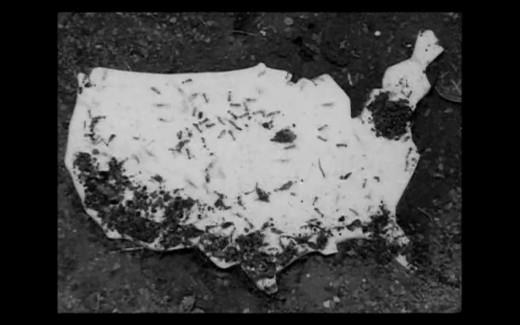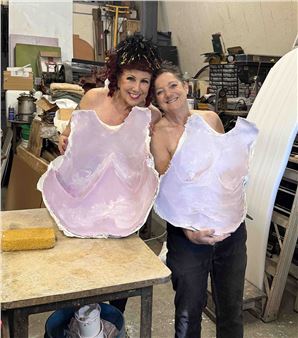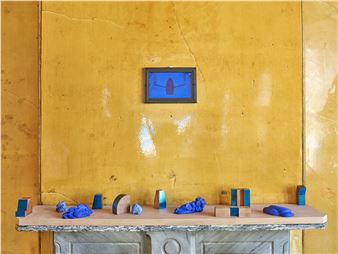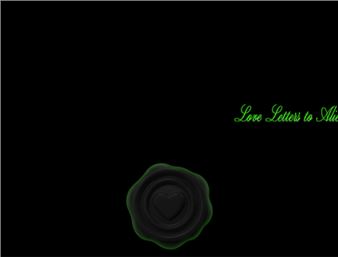A Journal of the Plague Year
A Journal of the Plague Year was first shown at Para Site, Hong Kong during the summer of 2013. Conceived as a touring exhibition, its center of gravity shifts under the influence of magnetic forces in each location on its itinerary. Nevertheless, each iteration departs from and remains strongly connected to an exploration of the events that affected Hong Kong in the spring of 2003: the most significant airborne epidemic in recent yearsвҖ“the SARS crisisвҖ“coupled with the tragic death of pop figure and pan-Asian icon Leslie Cheung.
Stemming from its colonial past, Hong Kong has internalized a history of epidemics and representation as an infected land waiting to be conquered from nature, disease, and oriental habits in order to be made healthy, modern, and profitable. Culminating in the discovery of the bacteria causing the plague during an 1894 epidemic in Hong Kong, these narratives contributed to a dubious association of the disease with Asia, and heightened the infamous вҖңyellow perilвҖқ racist discourse in Europe and America at the time. For example, San FranciscoвҖҷs plague epidemic of 1900-1904 was centralized in its Chinatown, and was part of the same epidemic wave that affected Hong Kong. These facts, together with the virulent racism in California at the time, further intensified the association between disease and Asian populations.
Departing from these events, A Journal of the Plague Year navigates disparate but interconnected narratives in order to contribute to a critical discussion about recent history, the implications of which extend beyond Hong Kong and beyond the realm of medicine. Through the contributions of artists, shown alongside historical artifacts and pop-culture ephemera, the exhibition confronts fear of contamination (both physiological and cultural) and the projections and prejudices that emerge from societies that encounter alterity. The exhibition also gathers documentation of a selection of performances that have destabilized mechanisms of hatred and politics of differentiation, which are based on dehumanizing the body of вҖҳthe otherвҖҷ. This experience is perpetually fabricated everywhere, especially in societies where immigrants were and are still frequently represented as pests, as a disease that sickens the homogeneous social body.
Each of these performance pieces, places the fragile but individualized human body on the frontline at various moments of historical transformation and rupture and in different corners of the globe: the identity struggles of Chicano communities in the US in the 1970вҖҷs; the highly insecure Hong Kong of the 1980s, foreshadowing its handover to Mainland China; China itself during its traumatic post-Tiananmen years; Singapore and the last chapters of the Lee Kuan Yew era; Kazakhstan at the dawn of nationhood and after the fall of the Soviet Union; and finally, Myanmar amidst its current transformation, under the specter of a possible democracy and growing rejection of Muslims.

Recommended for you
A Journal of the Plague Year was first shown at Para Site, Hong Kong during the summer of 2013. Conceived as a touring exhibition, its center of gravity shifts under the influence of magnetic forces in each location on its itinerary. Nevertheless, each iteration departs from and remains strongly connected to an exploration of the events that affected Hong Kong in the spring of 2003: the most significant airborne epidemic in recent yearsвҖ“the SARS crisisвҖ“coupled with the tragic death of pop figure and pan-Asian icon Leslie Cheung.
Stemming from its colonial past, Hong Kong has internalized a history of epidemics and representation as an infected land waiting to be conquered from nature, disease, and oriental habits in order to be made healthy, modern, and profitable. Culminating in the discovery of the bacteria causing the plague during an 1894 epidemic in Hong Kong, these narratives contributed to a dubious association of the disease with Asia, and heightened the infamous вҖңyellow perilвҖқ racist discourse in Europe and America at the time. For example, San FranciscoвҖҷs plague epidemic of 1900-1904 was centralized in its Chinatown, and was part of the same epidemic wave that affected Hong Kong. These facts, together with the virulent racism in California at the time, further intensified the association between disease and Asian populations.
Departing from these events, A Journal of the Plague Year navigates disparate but interconnected narratives in order to contribute to a critical discussion about recent history, the implications of which extend beyond Hong Kong and beyond the realm of medicine. Through the contributions of artists, shown alongside historical artifacts and pop-culture ephemera, the exhibition confronts fear of contamination (both physiological and cultural) and the projections and prejudices that emerge from societies that encounter alterity. The exhibition also gathers documentation of a selection of performances that have destabilized mechanisms of hatred and politics of differentiation, which are based on dehumanizing the body of вҖҳthe otherвҖҷ. This experience is perpetually fabricated everywhere, especially in societies where immigrants were and are still frequently represented as pests, as a disease that sickens the homogeneous social body.
Each of these performance pieces, places the fragile but individualized human body on the frontline at various moments of historical transformation and rupture and in different corners of the globe: the identity struggles of Chicano communities in the US in the 1970вҖҷs; the highly insecure Hong Kong of the 1980s, foreshadowing its handover to Mainland China; China itself during its traumatic post-Tiananmen years; Singapore and the last chapters of the Lee Kuan Yew era; Kazakhstan at the dawn of nationhood and after the fall of the Soviet Union; and finally, Myanmar amidst its current transformation, under the specter of a possible democracy and growing rejection of Muslims.
Artists on show
- Adrian Wong
- Ai Weiwei
- Anand Patwardhan
- Apichatpong Weerasethakul
- Asco
- Bernd Behr
- Chen Yin-Ju
- Dorothea Lange
- Firenze Lai
- Gabriel Leung
- George Chinnery
- Irene Kopelman
- James T. Hong
- Kevin Killian
- Lamqua
- Larry Feign
- Lee Kit
- Len Lye
- Lygia Pape
- Ma Liuming
- Megan Cope
- Ming Wong
- Moe Satt
- Nguyen Tan Hoang
- Oscar Chan Yik Long
- Pak Sheung Chuen
- Paul McCarthy
- Raymond Pettibon
- Rustam Khalfin
- Samson Young
- Sergio De La Torre
- Shooshie Sulaiman
- Yoshua Okón
Contact details


 ARTISTS
ARTISTS















